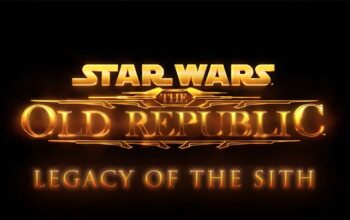
In news that is sweeping the internet, I am so excited to report that the new Star Wars films, confirmed for Episode 7 scheduled to be released in 2015 (just not exactly sure when, yet!), will be filmed in traditional 35mm film stock, specifically Kodak film stock 5219, and not digitally as was done with the last two entries of the Star Wars prequel trilogy. First broken to the public on BobaFettFanClub.com, the revelation was given by cinematographer Dan Mindel, ASC BSC, who is being tasked by director J.J. Abrams to bring this next generation of movies to fruition. Mindel has worked with Abrams three of his previous films including Mission Impossible III, and the two most recent Star Trek films, and his art can be witnessed next in Amazing Spider-man 2.
As a part of a Q&A session during a film industry event at the ASC Club House in Los Angeles, Kodak representative Loretta Bayle presented the question which led to the intriguing reply. As a note, during the event, Mindel also described the lens flare accident which Abrams liked so much he later incorporated very controversial into the Star Trek films, and a technique I hope is suppressed in the Star Wars films. Combined with Kathleen Kennedy’s comments about returning to the look of the original movies, and J.J. Abrams’s shared love for film over digital equipment, the production seems to be very focused on leaning away from the cold feelings of CGI and green screen acting audiences seemed to complain about after Episodes II and III.
Personally, combined with this news, I hope there is also a return to real world models for the ships in the movie, because mass still seems to be what computer graphics can not duplicate. Models in physical space can be tricked into looking full scale and as massive as they would be in reality, but CGI still seems to struggle with that. Whether that happens or not, I do not know, but ILM seems to have improved greatly in that area since Episode III with the Iron Man and Star Trek movies as good examples. Digital cameras still attempt to duplicate the texture film gives to movies but continue to fall short. Real film stock, I feel, adds atmosphere and separates us enough from what is going on in our own world from what is in the screen, that it somehow makes us believe it more, like reading a good pulp-stock paperback as opposed to a bright glossy-white hard cover. Most of us would rather curl up with the paperback, which is a much more personal and immersive experience.
Abrams seems to share my thoughts about the importance of staying beholden to film stock, and had this to say about its use to the audience of the Produced By conference in June:
“I have not yet shot a movie digitally. Film is the thing I am most comfortable with. If film were to go away — and digital is challenging it— then the standard for the highest, best quality would go away….Also, with all the CG, it was important to me that it was as warm and human and analog as possible.”
With this type of concerns being met at this stage of production, even if it is leaking out slowly to us fans, all of it seems to be good news for the future of Star Wars at the movies.



